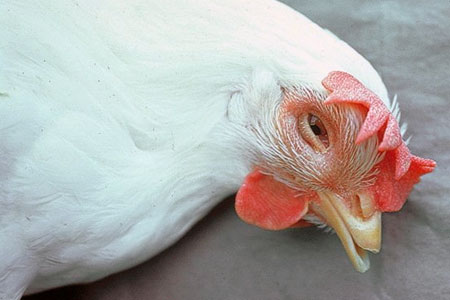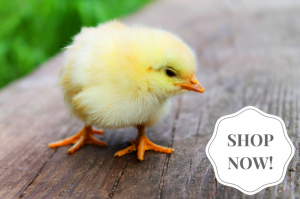
Infectious coryza is one of the most common bacterial diseases of backyard chickens. It is, in fact, the chicken version of the common cold. Avibacterium paragallinarum bacteria cause this respiratory disease. Like the common cold, infectious coryza is particularly prevalent in the fall and winter, especially in the southeastern and northeastern United States and in California. Regardless of where you live, you can take measures to protect your chickens from infectious coryza.
How Infectious Coryza Spreads
Infectious coryza is highly contagious and spreads in much the same way as the human common cold — through coughed or sneezed respiratory droplets. Chickens become infected through contact with infected or carrier birds and their nasal or respiratory discharges. These discharges can linger in coop dust, drinking water, or feed.
Survivors of the disease remain carriers. However, all chickens in the same flock are likely to be carriers, even if they never showed any signs of illness.
This disease therefore easily gets into an established flock when you unknowingly bring in a carrier. It also may spread from a carrier at a poultry show, a swap meet, or a live bird sale.
Avibacterium paragallinarum bacteria do not survive long in the environment and are easy to destroy with disinfectants. However, first you have to dispose of the entire flock. As you can see, the preferable plan is to protect your chickens from getting infectious coryza in the first place.
Signs of Infectious Coryza
Also called roup or catarrh, infectious coryza has an incubation period of 1 to 3 days. Signs include these:
- foul-smelling discharge from nose
- discharge that becomes crusty or cheesy
- swollen face, eyes, and sinuses
- swollen wattles in roosters
- labored or noisy breathing
- sneezing
- watery eyes with eyelids stuck together
- drop in feed and water consumption
- 10% to 40% drop in egg production
- sometimes diarrhea
- usually less than 20% deaths
In many ways, infectious coryza resembles other respiratory diseases of chickens. However, if your chickens have facial swelling with bad-smelling nasal discharge, those are pretty good signs they are suffering from infectious coryza.
How to Protect Your Chickens
Although chicks as young as 3 weeks old are susceptible to infectious coryza, chickens are less likely to get infected until they are at least 3 months old. But from then on they become more susceptible as they get older.
The best way to protect your chickens from infectious coryza is to practice good biosecurity. That means avoiding contact between your flock and other chickens, including never introducing growing or grown chickens into your flock. To increase your flock size, start with newly hatched chicks that haven’t yet been exposed to disease-causing organisms.
Or you could vaccinate your chickens when they are between 8 and16 weeks old. For full protection, administer a booster 3 to 4 weeks later. Vaccinated breeders pass temporary immunity to chicks hatched from their eggs.
Starting Over
If you suspect infectious coryza is already in your flock, get confirmation through testing at your state’s veterinary diagnostic laboratory. Your avian vet can then prescribe appropriate antibiotics to control the disease.
Antibiotics, however, will not eliminate the disease. That can be accomplished only by disposing of the entire flock. Then disinfect the premises and leave it vacant for at least 3 weeks before introducing new birds.
Infectious coryza is not transmitted through hatching eggs. You could therefore preserve your flock’s genetics by incubating eggs from infected breeders. But you’ll have to raise the chicks in a decontaminated environment.
Treatment Protocol
Infectious coryza is not known to be a risk to human health. You could, if you wish, treat your infected flock with antibiotics and provide the chickens with supportive care to ensure they get the nutrients they need to fight the infection.
Supportive care includes encouraging the chickens to eat through frequent feedings. Add vitamins and electrolytes to their drinking water to keep them hydrated. And see that the coop is well ventilated to dilute the population of airborne bacteria.
You will need to avoid contaminating other people’s chickens through contact with your infected flock. That means you should use a boot bath to avoid spreading bacteria on your shoes. And wear dedicated clothing while tending to your flock.
The better option is to rid your place of Avibacterium paragallinarum bacteria and start over. But the best option of all is to take the necessary precautions to protect your chickens from infectious coryza.
And that’s today’s news from the Cackle Coop.
Gail Damerow has written several books about keeping poultry, many of them available from the Cackle Bookstore. Photo from Avian Disease Manual 6th Ed, www.aaap.info.

